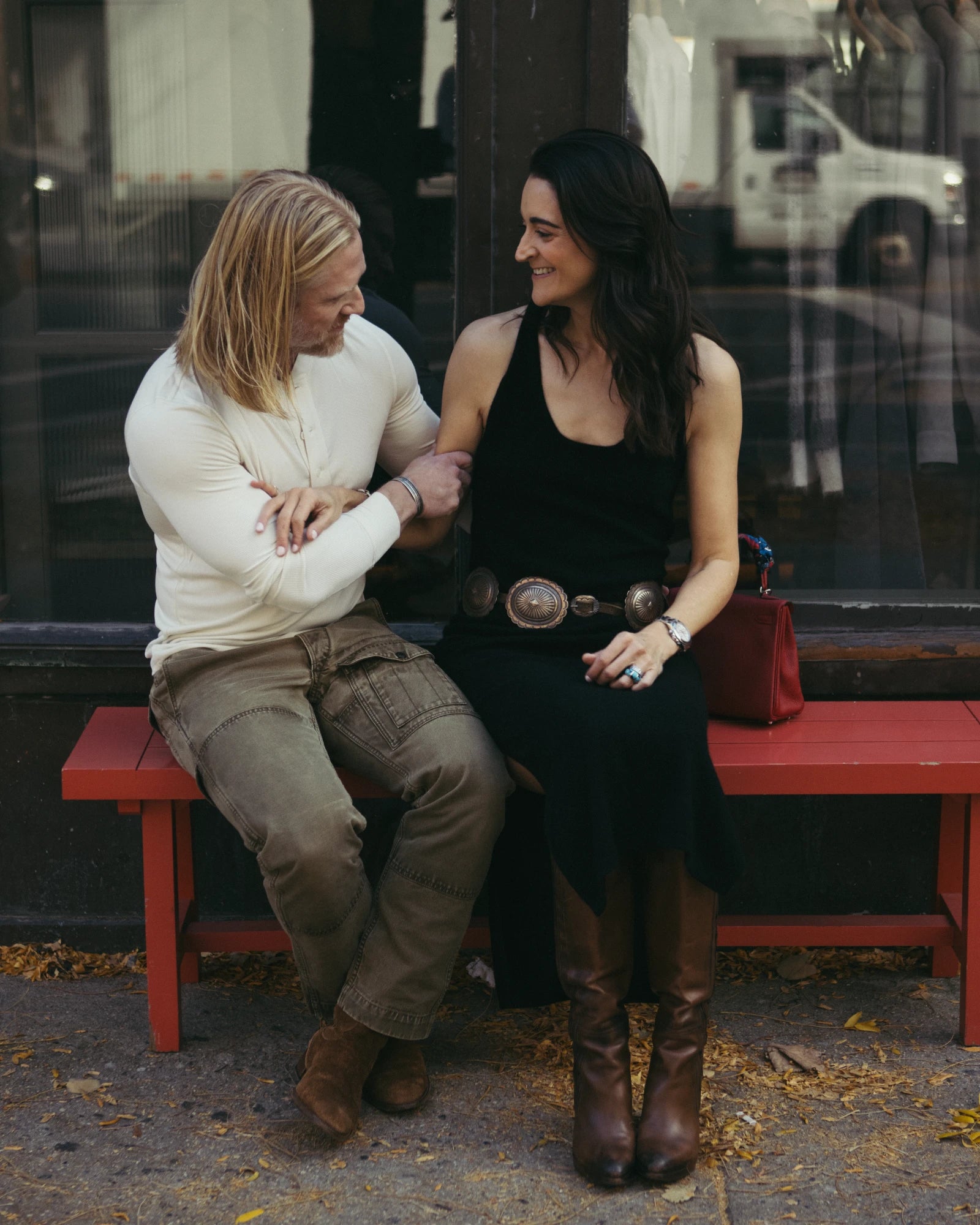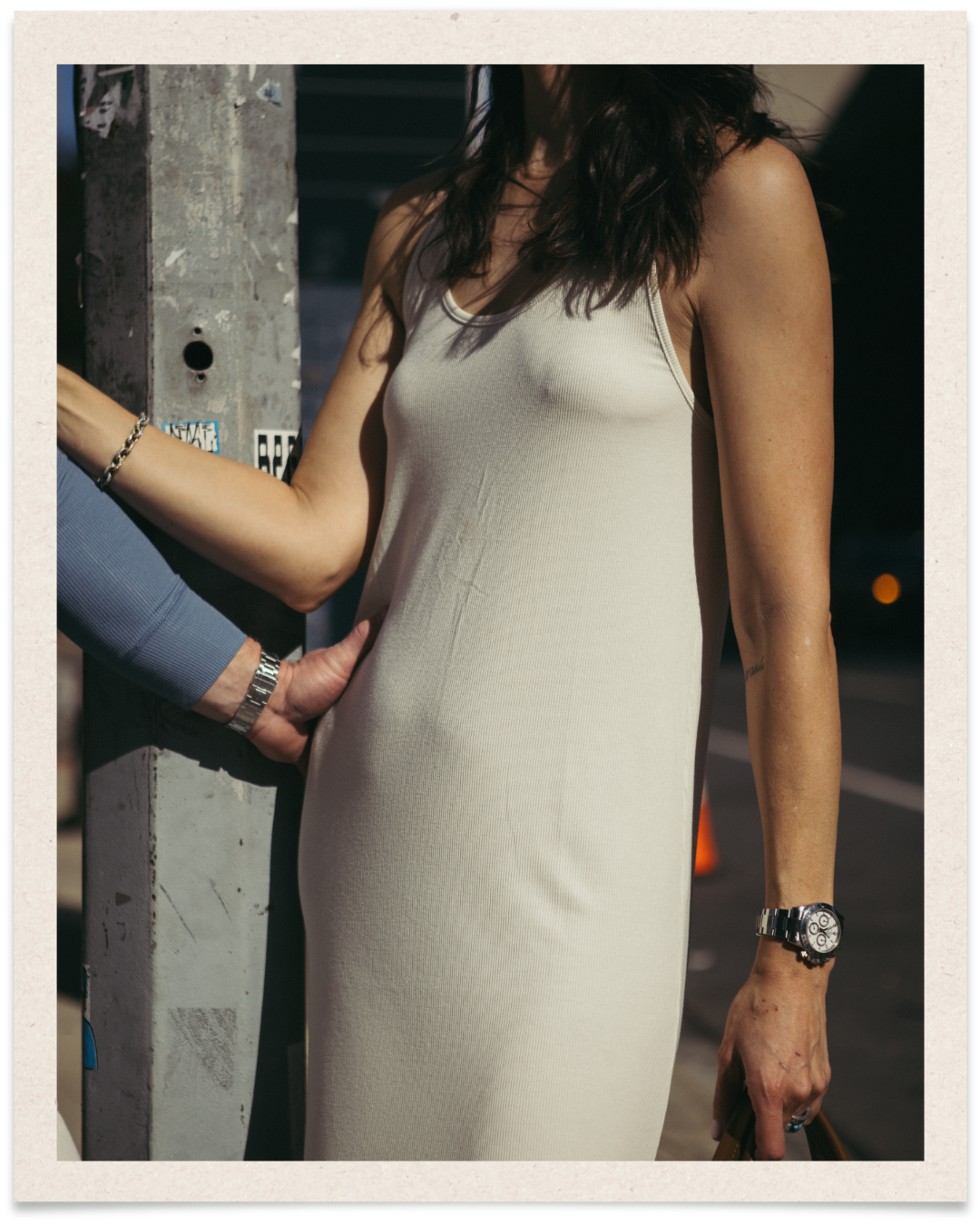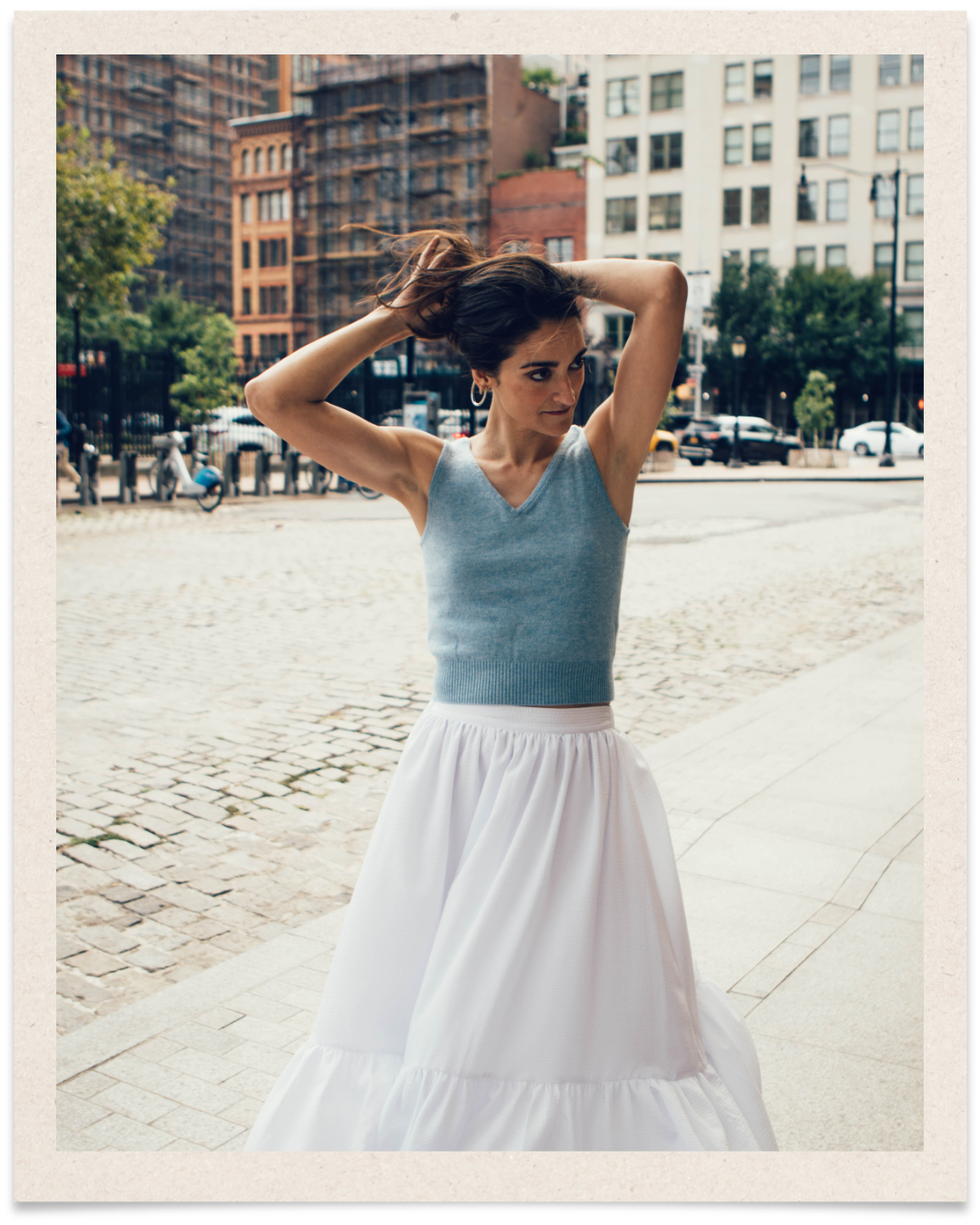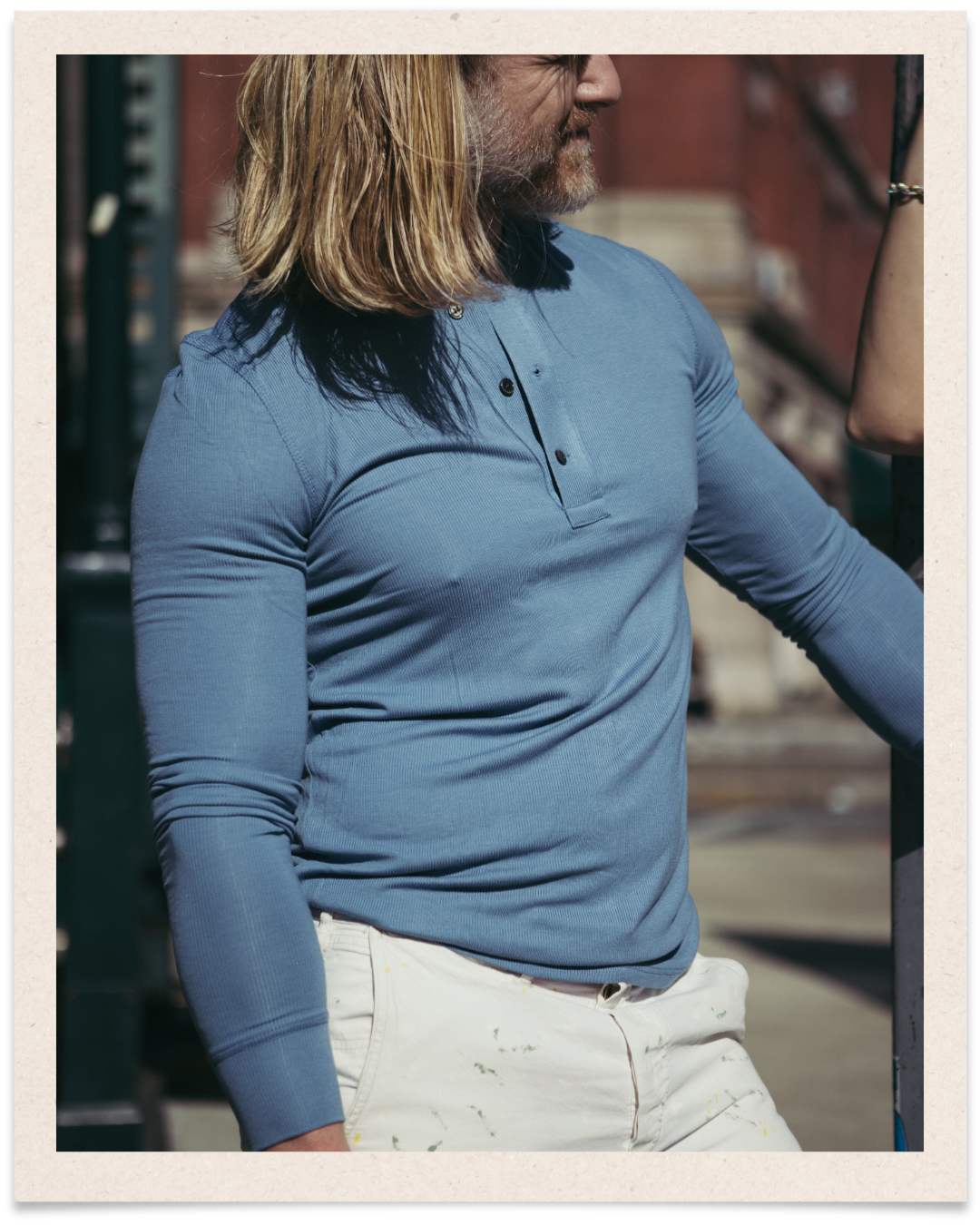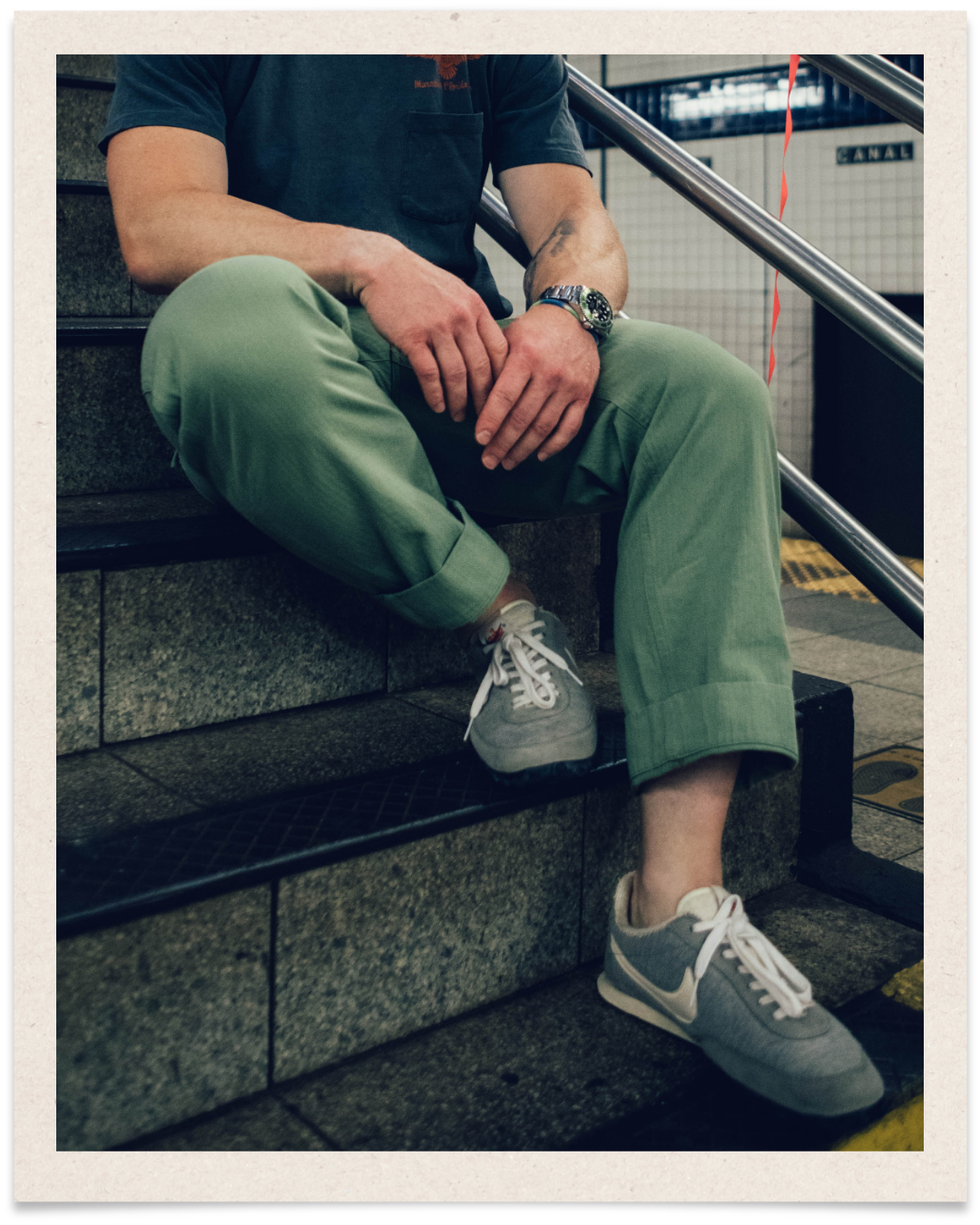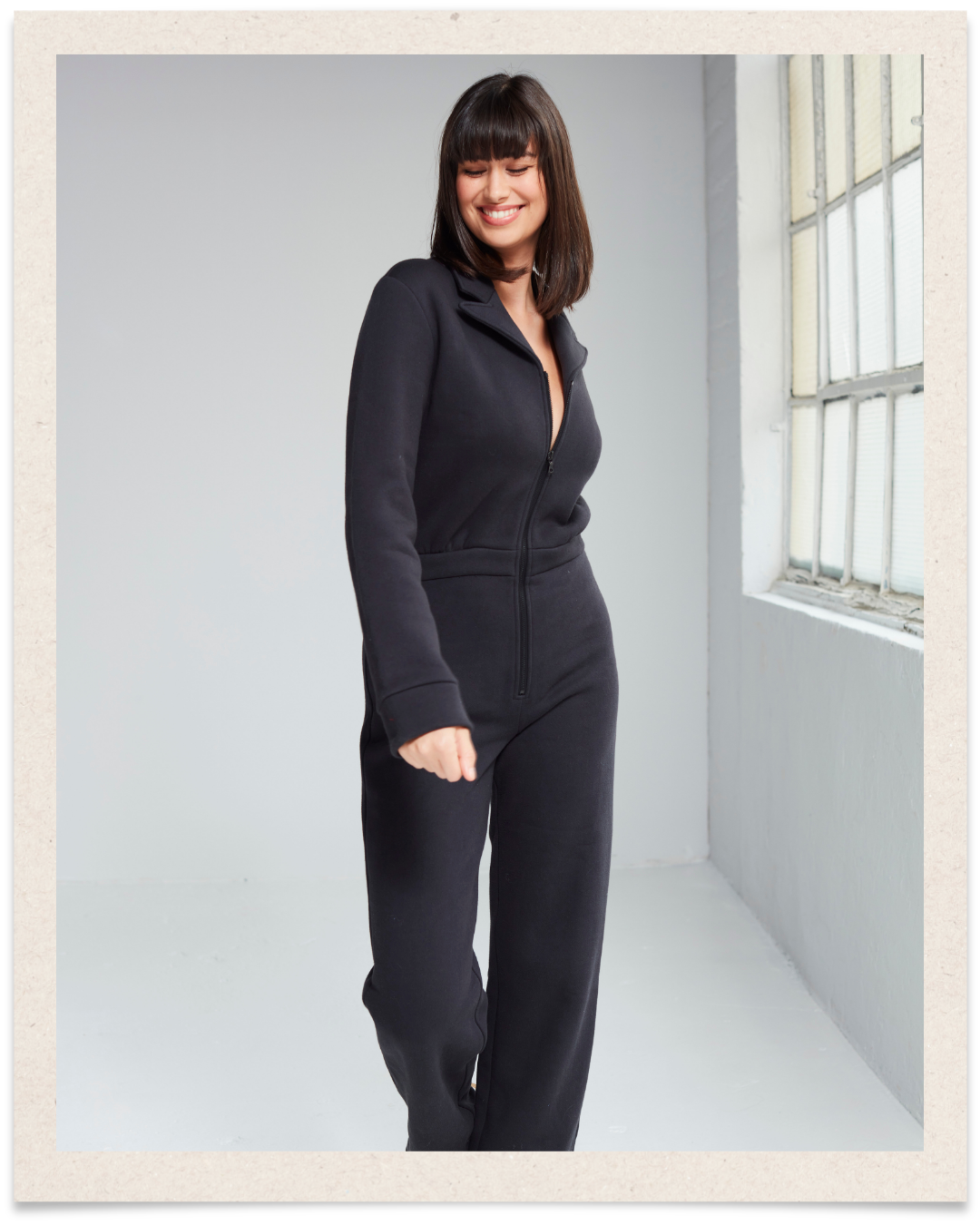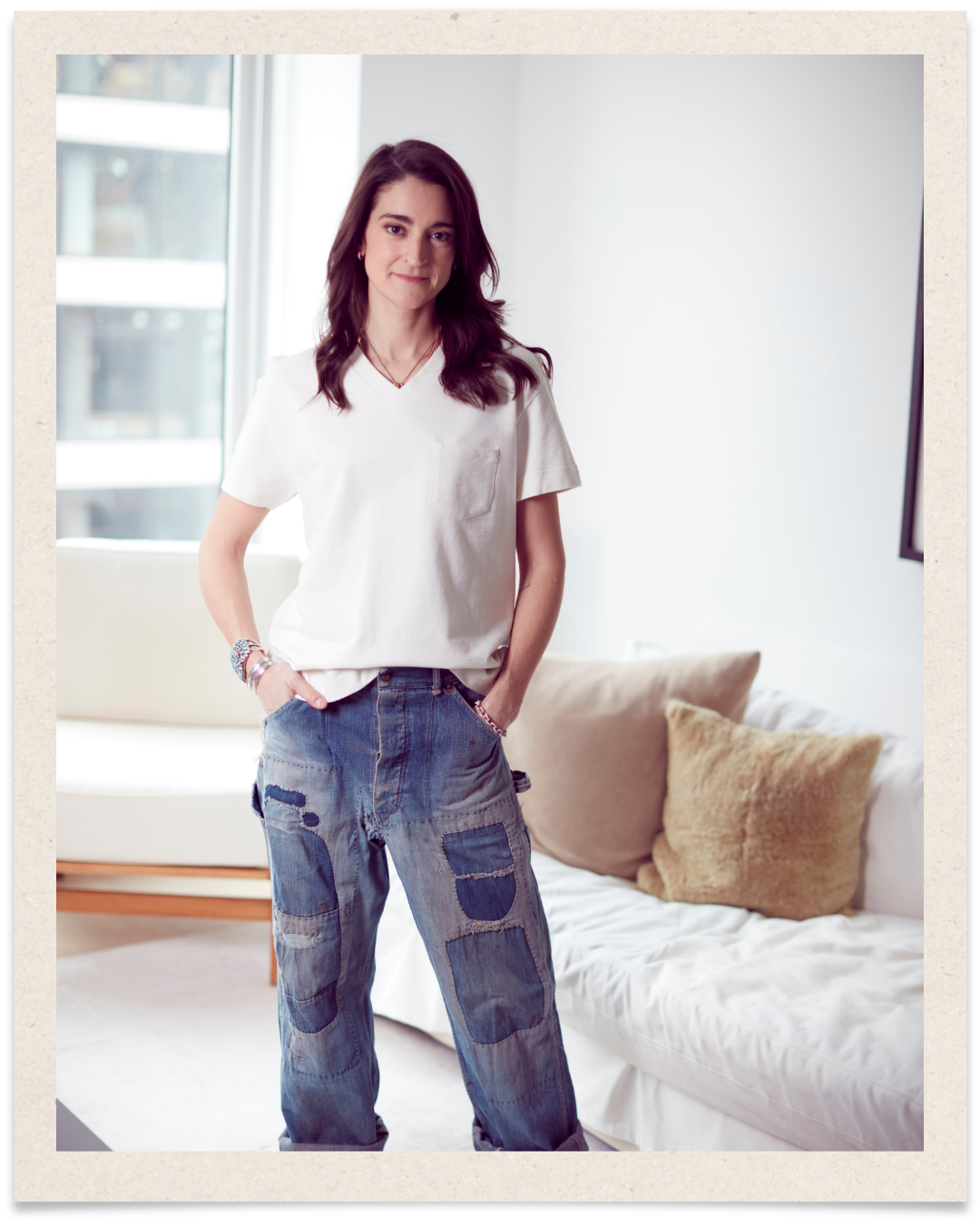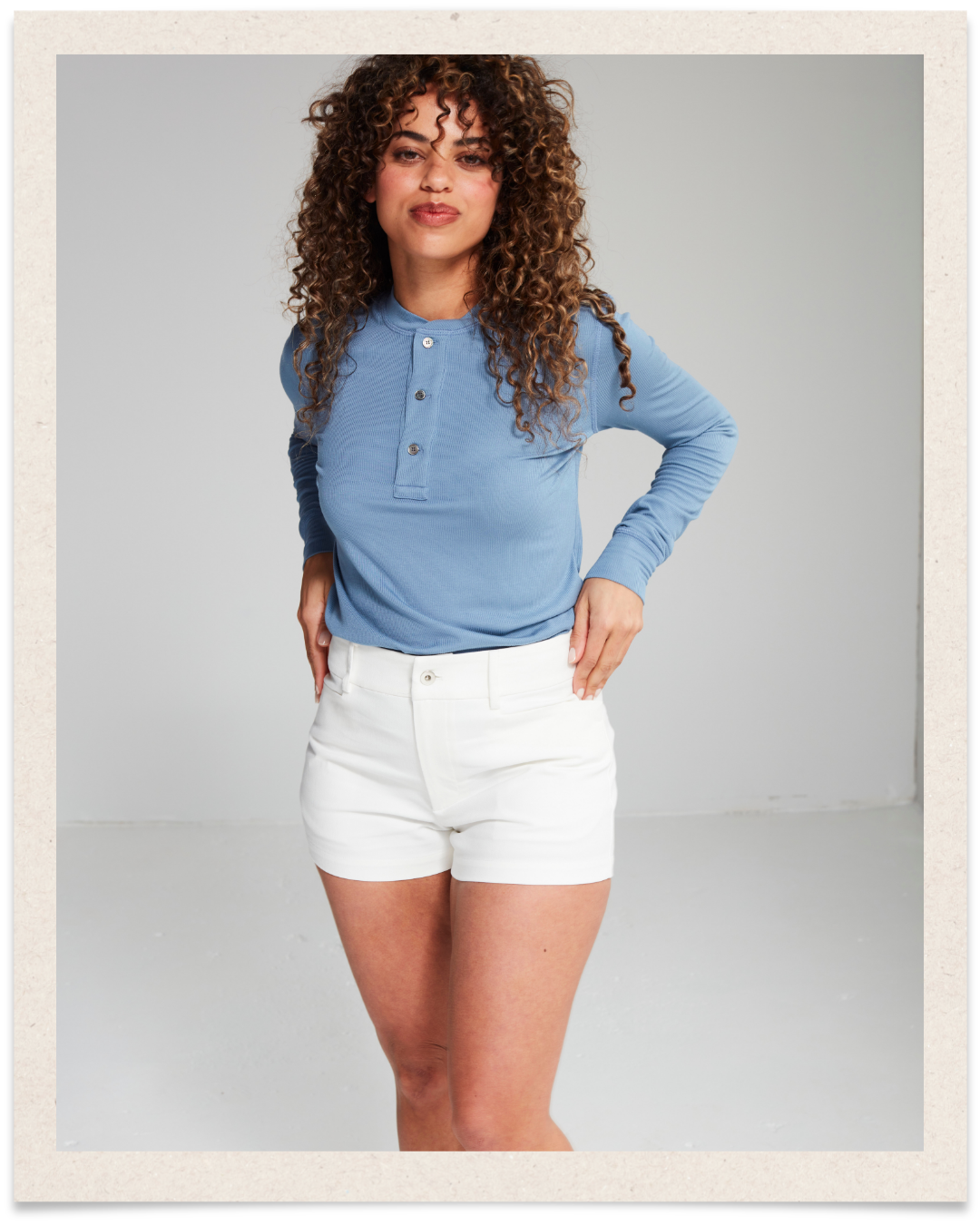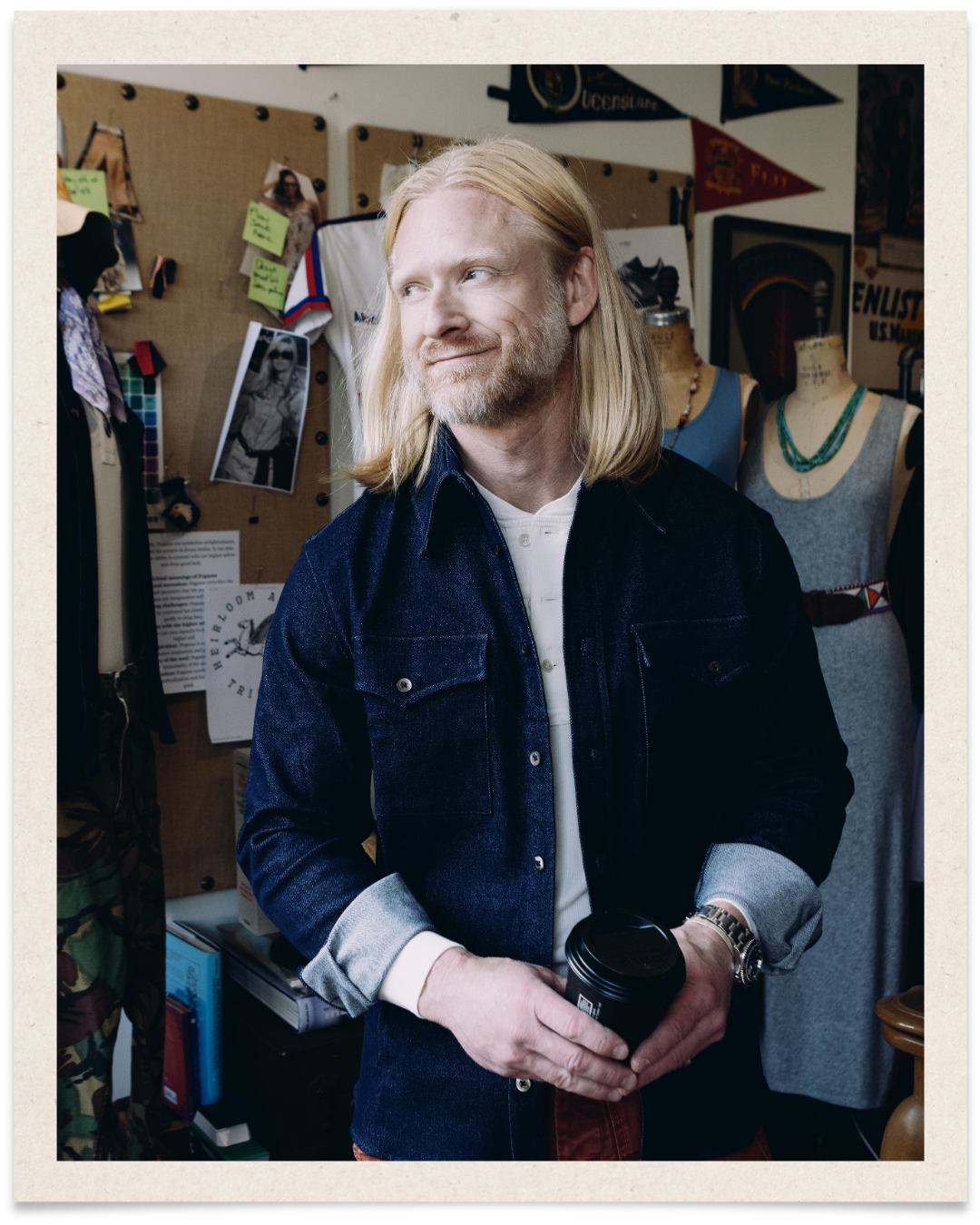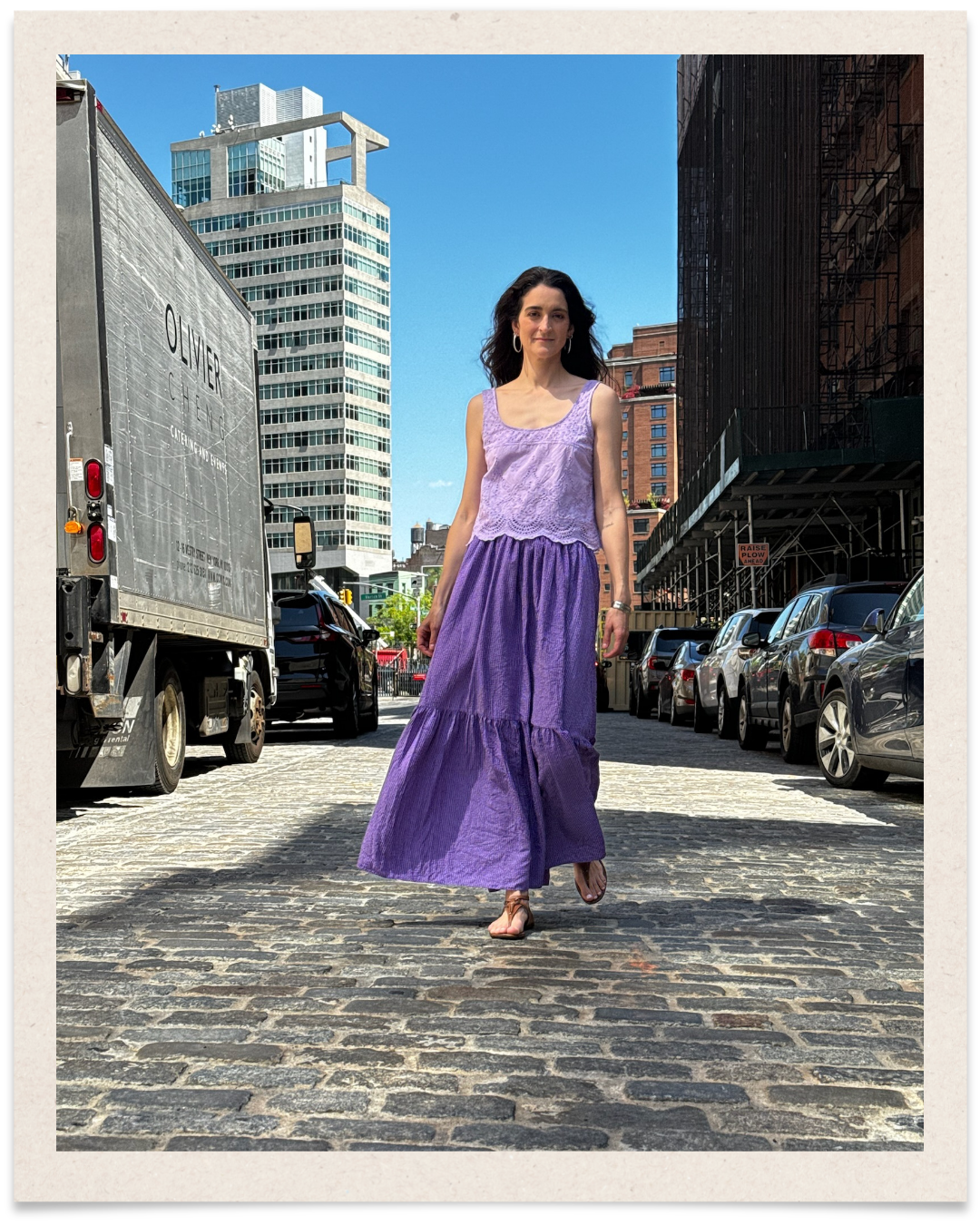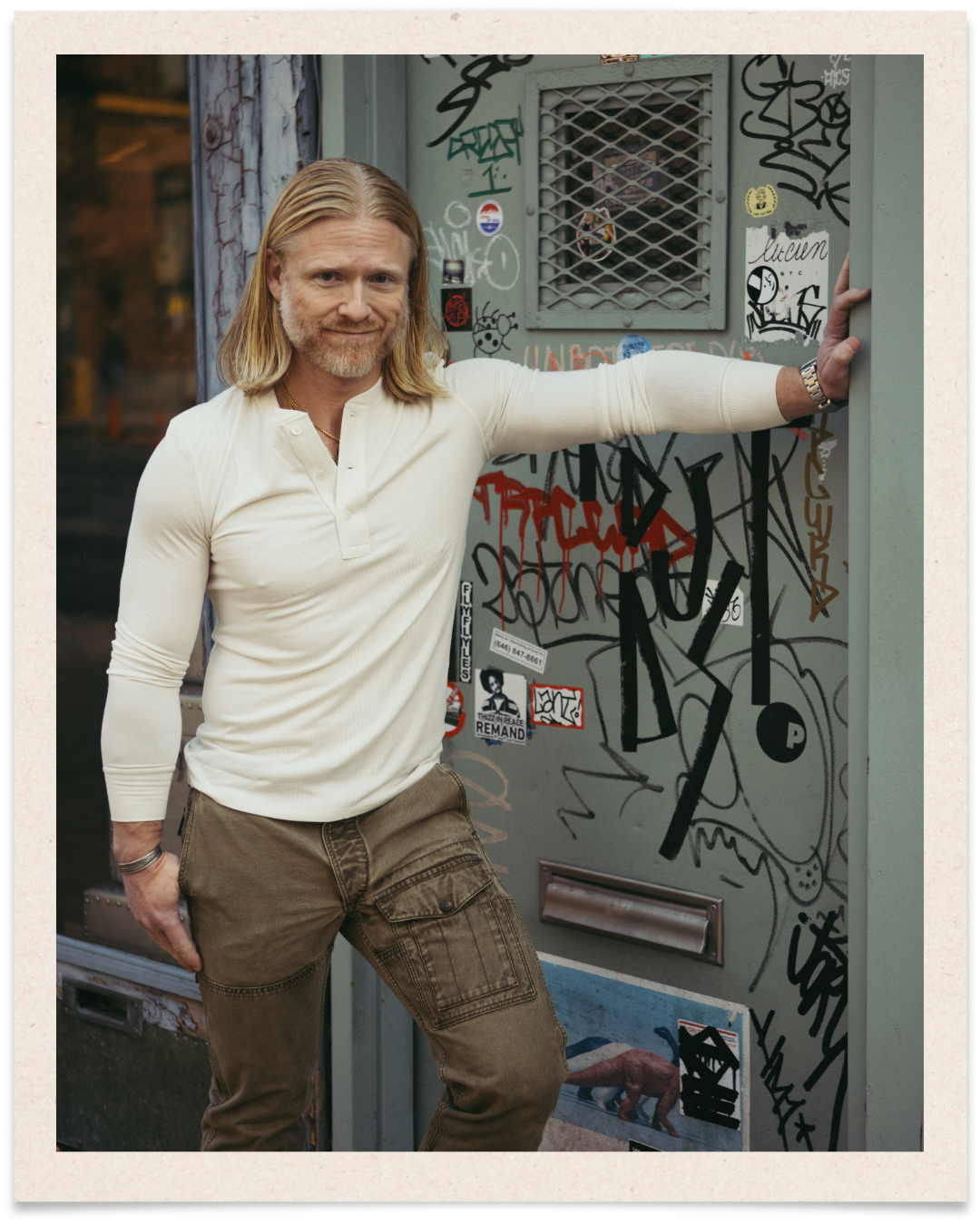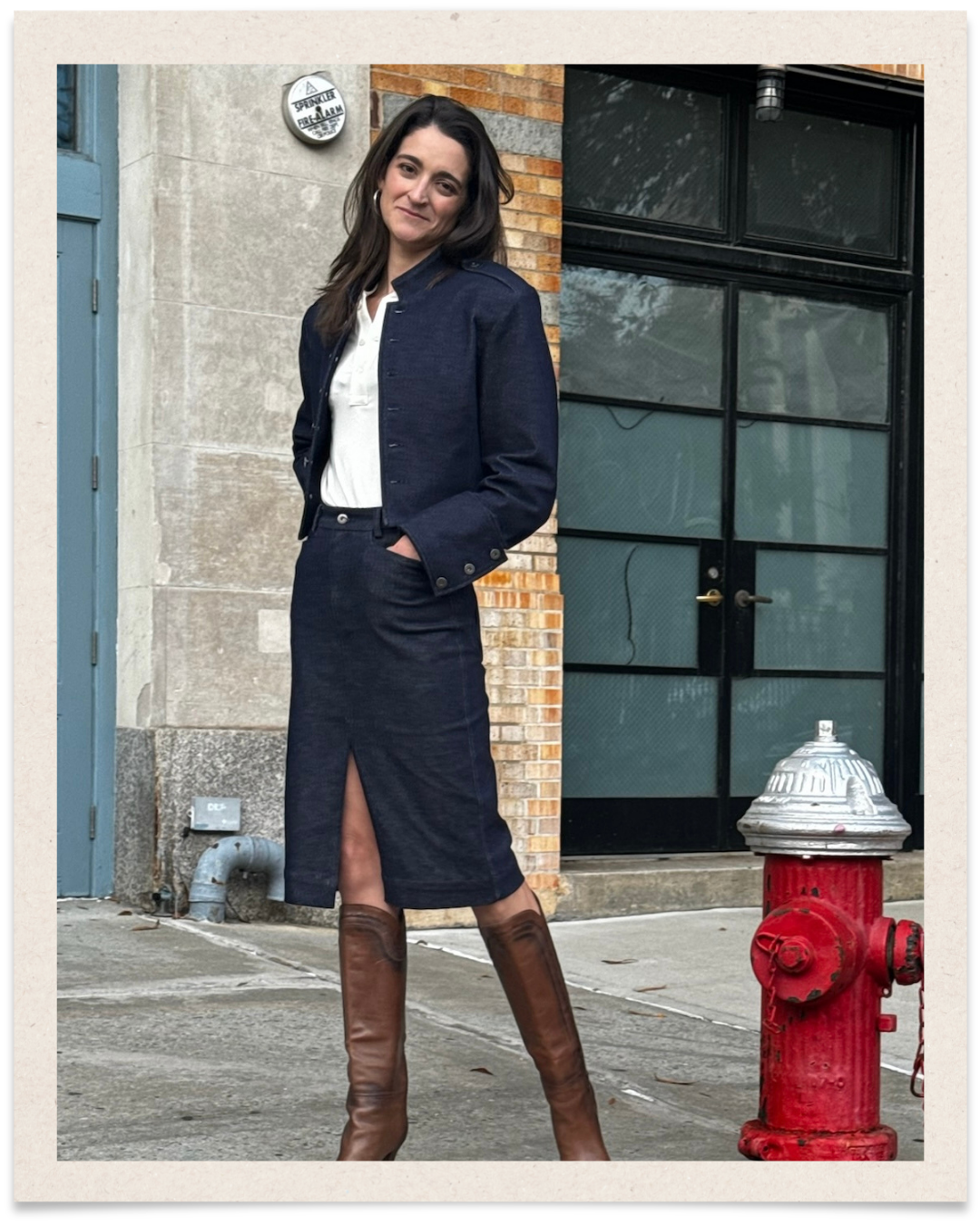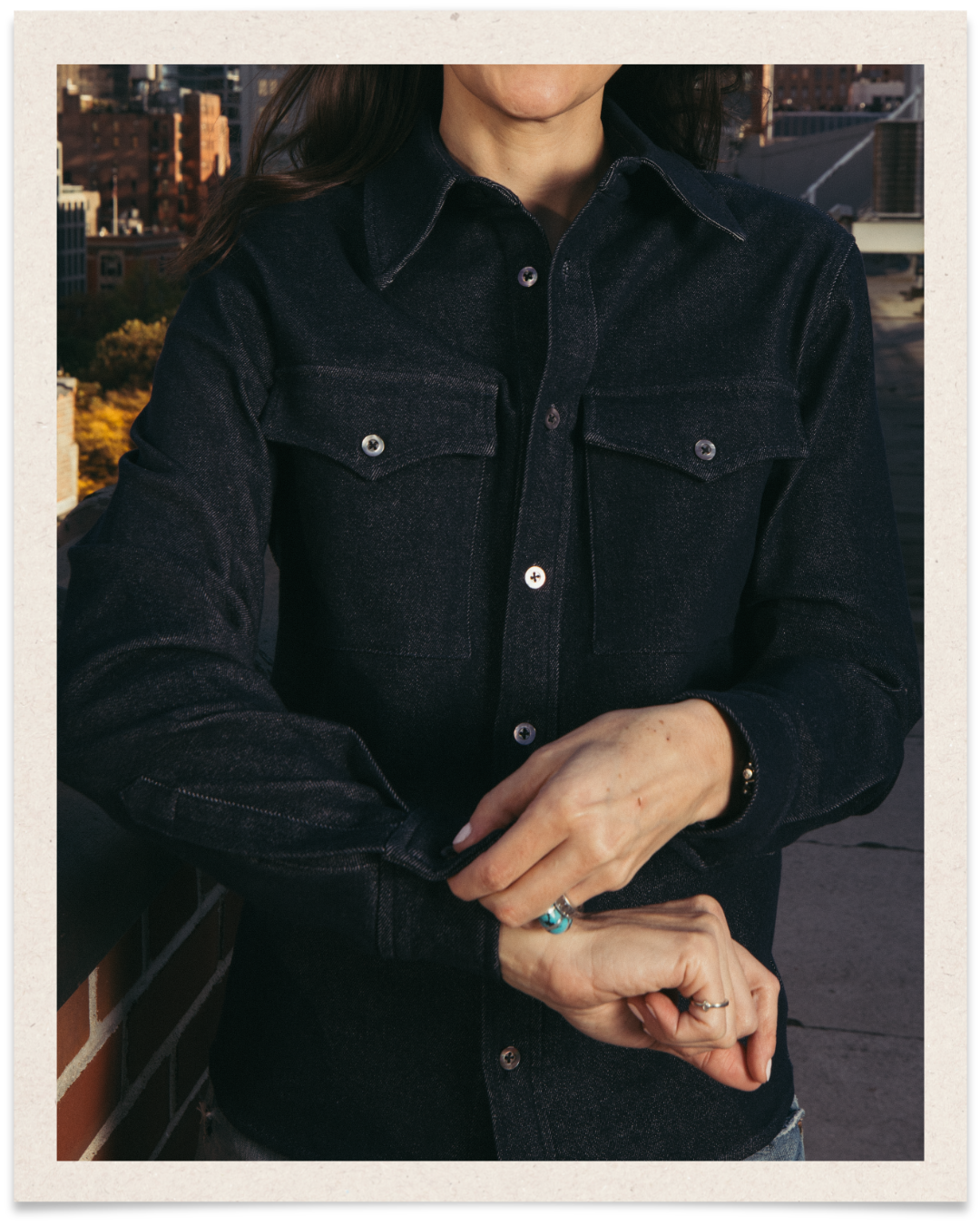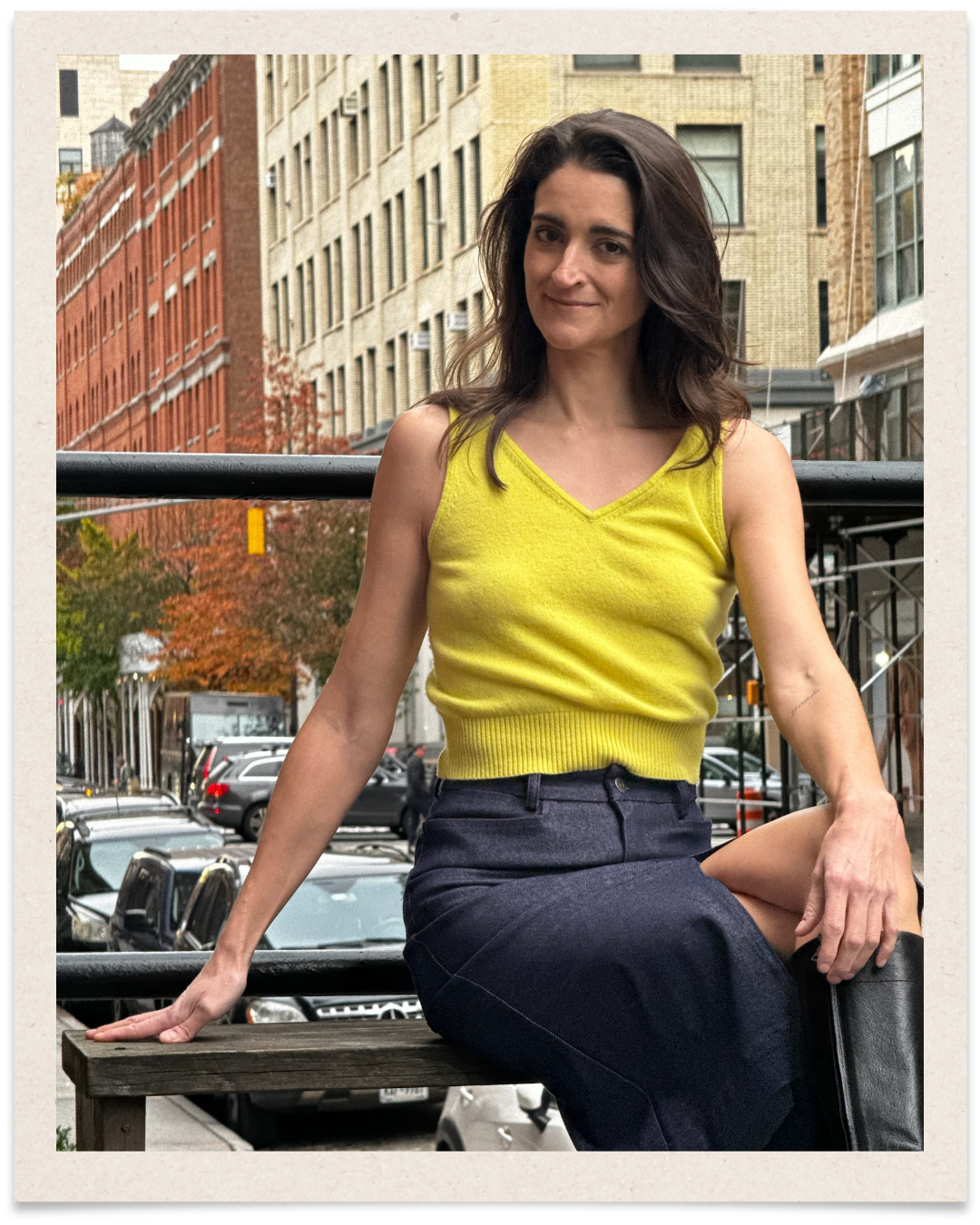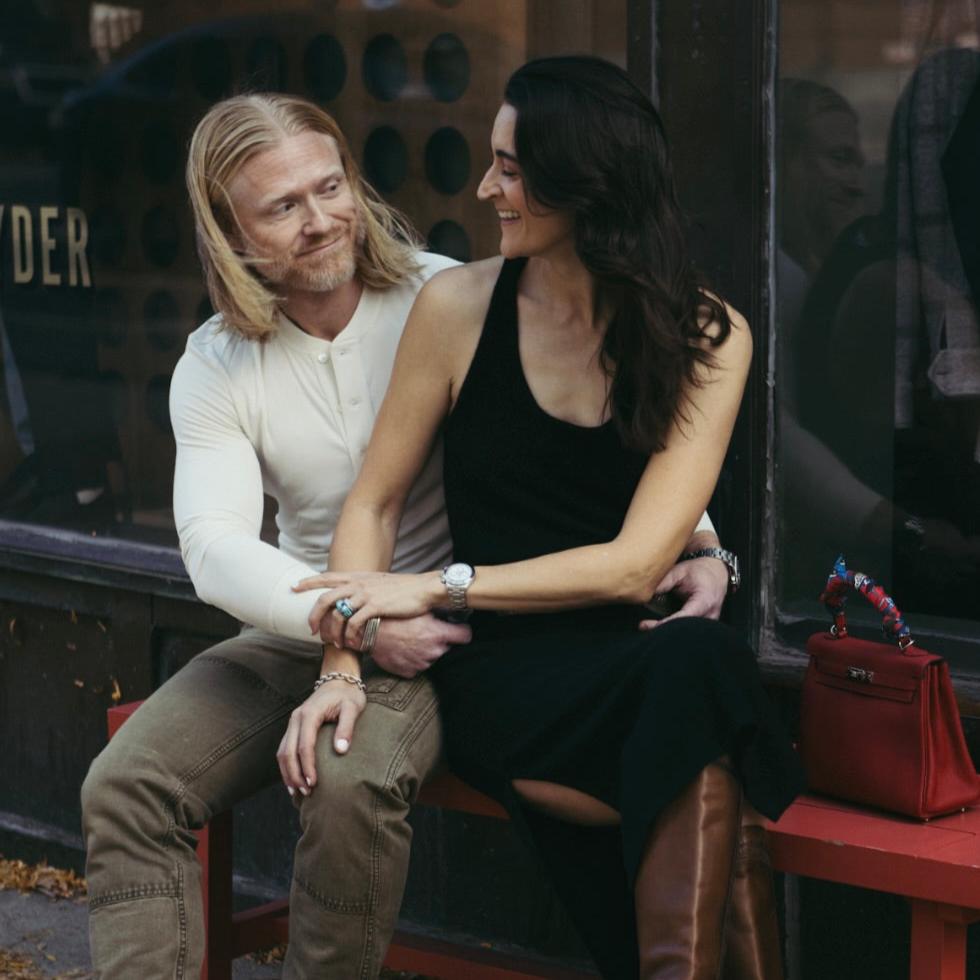The Heirloom Diaries
The Heirloom Diaries
The Making of an Heirloom: From Sketch to Sample
by Scott Burr
on Sep 30 2025
The Making of an Heirloom: From Sketch to Sample
Written by Scott Burr, Co-Founder of Heirloom Amalgam
Where Every Piece Begins
Every garment has a beginning. For us, it is rarely loud or dramatic. It does not start on a runway or in a factory. It begins at a wooden table in our Tribeca studio, sometimes in the quiet of early morning, sometimes after the city has gone to sleep.
A sketch, a swatch of fabric, a small idea that lingers until we test it. That is where an heirloom is born. It is not about chasing trends or rushing to market. It is about building something slow and intentional, something that feels like it could have already lived in your closet for years.
This is how we make every Heirloom piece, from sketch to sample, and why we believe the journey matters just as much as the finished garment.
📸 Image Suggestion: Amy at the studio table sketching, morning light over swatches, a half-empty coffee beside her notebook.
The Spark of a Sketch
I have always been fascinated by how much meaning a single line on paper can hold. For Amy, sketches are a way of keeping a memory. She will notice a detail during a walk in the city, the way a stranger’s jacket hangs open, or how the collar on a vintage military shirt has softened with time, and it becomes a starting point.
For me, sketches are blueprints. They are where imagination first begins to meet execution. I do not just see a silhouette on the page, I see the pattern pieces, the tension points, the seams that will need reinforcement.
We keep notebooks stacked high with ideas. Some never leave the page, but others, like the Franklin Henley, start here, with a pencil line and a moment of curiosity. What if we could take a utilitarian base layer from the 1940s and soften it into something versatile and timeless today? That one sketch became the shirt that would anchor our entire collection.
Most of our sketches are not perfect the first time. They are messy, marked with arrows, and surrounded by fabric swatches pinned into the margins. They are working maps, guides that will eventually lead to a piece you can live in.
📸 Image Suggestion: Flat lay of an open sketchbook with pencil drawings of a Henley or tee, swatches pinned to the page, tailor’s scissors in frame.
Living With Fabric
Once the idea is there, the sketch only tells half the story. The real decision begins when the fabric arrives.
We do not just look at a swatch and say “this will do.” We live with it. We stretch it, wash it, wear it for an afternoon in the studio just to see how it breathes. Sometimes we leave a piece of fabric on the table for days, glancing at it in different light, checking if it still feels right.
Certain fabrics keep coming back. Supima cotton, grown in the United States, is one of our go-to’s because it resists pilling, holds color, and wears in instead of wearing out. Compared to standard cotton, Supima fibers are about 35 percent longer and significantly stronger, which means the fabric will not fray or lose its shape after a few washes. It is the reason our sweatshirts still look new after years of wear.
Modal, the 2x1 knit we use in the Franklin Henley, is another favorite. It is breathable, resilient, and unbelievably soft. It does not just drape well, it remembers you. It is made from beech tree pulp, which means it is renewable and lower impact than most conventional fibers. When people say they live in their Henleys, it is not just the cut. It is the way modal feels like second skin.
And then there is cashmere, airy, warm, able to carry memory like no other fiber we have worked with. Good cashmere does not just keep you warm. It softens as you live with it, holding the shape of your life, the bend of your elbow, the rhythm of your days.
Each fabric is chosen with intention. Fabric is more than texture. It is the foundation of memory. If a shirt cannot survive a weekend away, a walk through the city, and years of washes, it does not belong in our collection.
📸 Image Suggestion: Hands spreading swatches across a table, notes scribbled in the margins: “too stiff,” “yes,” “soft but durable.”
From Paper to Prototype
The first sample is my favorite moment. It is when an idea becomes something you can actually hold, even if it is not ready yet.
We call it the learning stage. The sample is not meant to be perfect. In fact, it is usually the opposite. It reveals every detail the sketch could not show. Where the weight of the fabric sits. How the collar falls when you move. Whether the hem wants to twist or the sleeve pulls too tightly.
I will put it on, Amy will circle me with pins and chalk, lowering a neckline by two millimeters or shifting a dart by the width of a finger. Sometimes it takes three or four rounds before a sample feels right. And that is okay. This stage is patient, meticulous, and often quiet.
We test prototypes in daily life too. I have worn early samples out to dinner, to the studio, even on a weekend trip. That is when you discover how a shirt really performs. Does it wrinkle too easily? Does the fabric stretch out after a few hours? Does it still feel good at the end of the day? A garment has to live well before it can be considered heirloom-worthy.
We do not believe in rushing past prototypes. Every adjustment is part of the story. Perfection is not an instant decision, it is a process of carving away what does not belong until the garment stands on its own.
📸 Image Suggestion: Scott wearing a raw muslin prototype while Amy pins the hem, chalk marks visible on the fabric.
Craft That Lasts
At Heirloom, we often say that what you do not see is just as important as what you do. That philosophy shows up in the construction.
Take stitching. Most shirts are sewn with about four stitches per inch. Ours have nine. That might sound like a small detail, but it is what keeps a hem from twisting after a wash, or a sleeve from sagging after a year of wear. We finish seams cleanly on the inside, not for show, but so they feel good against your skin.
Buttons are another detail. We choose them not only for look but for strength, they are anchored to withstand years of wear, not just a single season. Even labels matter to us. They are soft against the skin, designed not to itch or fray.
Those are the kinds of invisible details that turn clothing into heirlooms. They do not announce themselves, but you notice them every time you reach for the piece again and again.
📸 Image Suggestion: Macro shot of a seam with consistent stitches, ruler or stitch counter in frame.
Why Small Matters
By the time a garment makes it through sketches, fabric tests, and prototypes, it is almost ready, but not for mass production.
We make our pieces in small batches, usually fewer than fifty at a time. That is intentional. Small runs let us oversee every step, from the cut of the fabric to the finishing of the seams. They keep the process personal. They ensure that what you hold in your hands feels like it passed through ours, because it did.
When you mass produce, garments lose their soul. When you make them slowly, in limited numbers, every piece carries a trace of the hands that shaped it. That is why some of our collectors call them garments with memory.
Every piece is signed off by us. Tried, tested, and worn until it feels like it belongs in someone’s life for years to come. That is what makes it heirloom-worthy.
📸 Image Suggestion: A row of just a few finished garments on wooden hangers, hand-written tags hanging from each.
From First Draft to Forever
The journey from sketch to sample is not glamorous. It is slower, softer, and often full of edits. But for us, that is where the beauty lies.
Because heirloom-worthy is not just about durability. It is about meaning. And meaning takes time.
When you wear one of our pieces, you are not just wearing fabric. You are wearing the memory of sketches drawn in the quiet, swatches tested in sunlight, prototypes pinned and adjusted until they felt just right. You are wearing patience, persistence, and care.
And if you are lucky, years from now, someone else will wear that same piece, softened by you, carrying your story, and it will keep on living.
📸 Image Suggestion: Amy folding a finished garment next to her sketchbook, sketch, swatch, and final piece all visible in one frame.
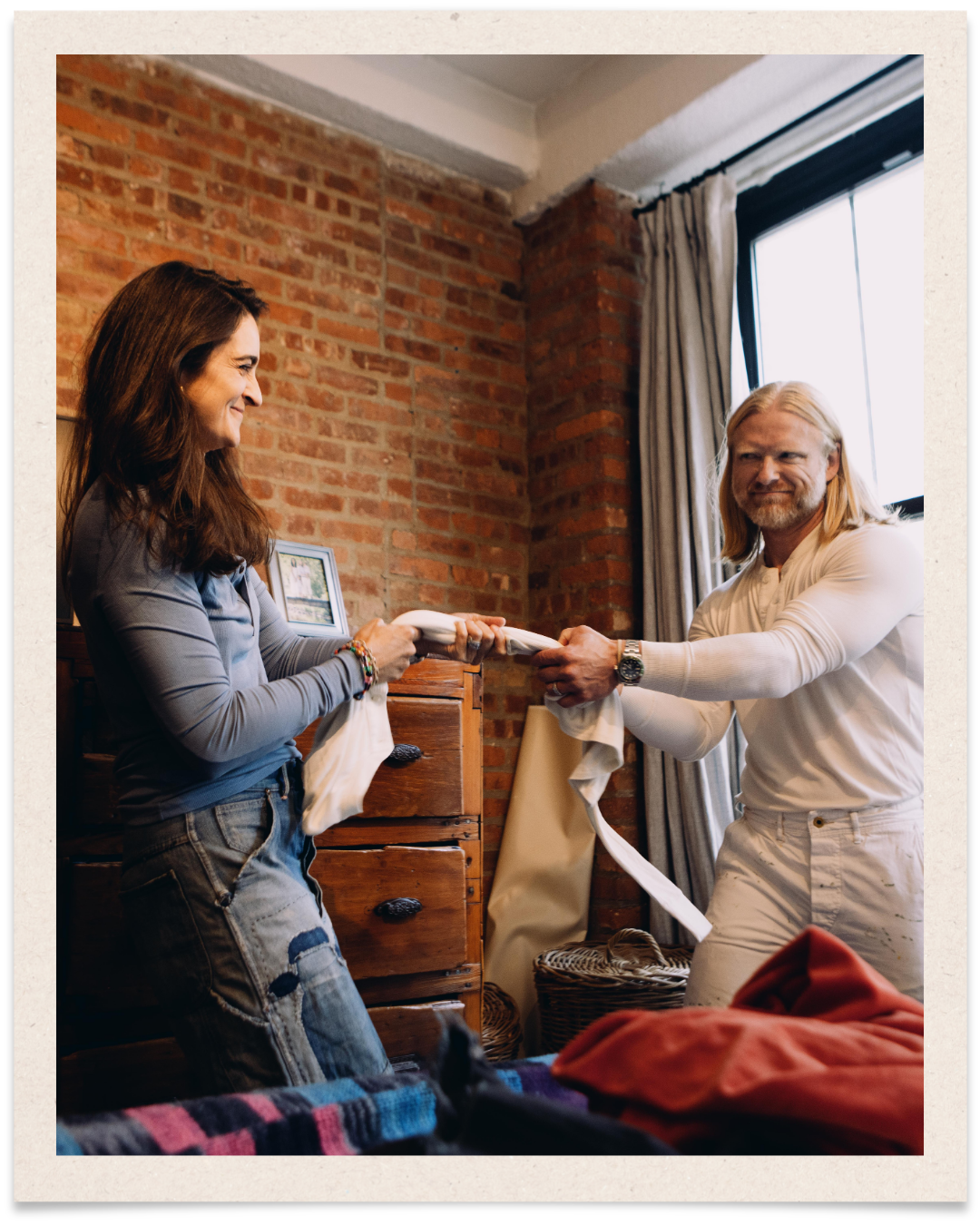
The Heirloom Diaries
He Stole My Henley: Why This Shirt Gets “Borrowed” Forever
by Amy Burr
on Sep 30 2025
He Stole My Henley
Written by Amy & Scott Burr, Co-Founders of Heirloom Amalgam
Intro Hook: The Softest Kind of Theft
He said he was just borrowing it. Three years later, it was still on his side of the closet.
If you have ever had a partner “borrow” your favorite piece of clothing and never give it back, you are in familiar company. Among our community, one story comes up more than any other, the stolen Henley.
There is something about the Franklin Henley that makes it irresistible. Soft enough to feel like second skin, structured enough to look intentional, and lived-in enough to pass for something pulled straight from the past. It is heirloom-worthy by design, which means once someone gets their hands on it, there is little chance of it coming back.
📸 Image Suggestion: A couple in a kitchen scene, he is wearing the Henley, she is mock-reaching for it from the laundry basket. Warm light, candid, playful.
The Shirt That Started It All
Before it became our most borrowed piece, the Franklin Henley was the shirt that started everything for Heirloom Amalgam. It was the first garment we knew belonged at the center of our collection, simple, intentional, and designed to be worn across decades, not seasons.
Inspired by 1940s military base layers, we softened the silhouette, cut it from custom-dyed 2x1 modal, and refined the details until it felt like something you had already lived in. This was not just another shirt, it was a memory in the making.
The Franklin was where Amy and I realized what Heirloom could be. Clothing that carried meaning, clothing that lived with you and then lived on after you.
📸 Image Suggestion: Archive-style flat lay, original sketches of the Henley, fabric swatches, and an early sample photographed like a keepsake.
Why It Is Always the Henley
There is a reason the Henley is the one that always gets stolen.
Heritage: Its DNA comes from garments designed for work, movement, and endurance. Military base layers were built to last, and we carried that philosophy forward.
Material: Modal offers softness and breathability with just enough stretch to keep its shape. It is eco-friendly, moisture-wicking, and naturally resilient.
Craftsmanship: We stitch nine per inch, more than double the industry standard. That means seams that hold shape, hems that resist twisting, and fabric that survives years of wear.
Design: The Franklin is unisex, which means it works across bodies, shapes, and styles. The cut flatters everyone, which explains why couples cannot stop borrowing it from each other.
All of this combines to make the Franklin addictive. It is the shirt you want to wear every day, which means once it disappears into someone else’s closet, you will notice the loss immediately.
📸 Image Suggestion: Macro close-up of stitching, fabric texture, and button placket, shot like an editorial detail.
Community Stories, The Softest Kind of Theft
We have heard it a hundred ways:
“He wore it once and said it fit better on him.”
“It is the only shirt he never returned.”
“I gave up and bought a second one.”
The Franklin has become more than a staple. It is a shared wardrobe ritual. It slips between closets, becomes part of love stories, and carries memories that outlast its original owner.
One collector wrote to us saying her Franklin Henley was how she knew her boyfriend would become her husband. He borrowed it on a trip upstate, wore it around the fire, and when she asked for it back he said, “it already feels like mine.” Another told us the Franklin became the shirt she wore through her pregnancy, then her partner wore it for the first nights of fatherhood.
These stories are playful but they are also profound. They prove what we believe, that clothing is not just fabric, it is memory.
📸 Image Suggestion: Carousel of couples sharing the Henley, folded shirt with a lipstick mark, note taped to a mirror reading “bring back my shirt.”
How to Wear and Share a Henley
The Franklin Henley is versatile enough to move with you through seasons and stories.
For her: Tucked into vintage denim, layered under a linen blazer, or worn loose with soft trousers. It can be styled feminine, tomboyish, or somewhere in between.
For him: With carpenter pants, under a leather jacket, or simply on its own with sleeves pushed up and coffee in hand. It feels intentional even when worn casually.
For both: It is the perfect travel companion, equally at home in a Tribeca café or on a porch upstate. It layers beautifully, works with everything from denim to sweatpants, and carries you from morning errands to evening rituals.
So whether you are the one lending or the one stealing, the Franklin always finds its place.
📸 Image Suggestion: Split-frame photo, left shows a woman styling the Henley in the city, right shows a man wearing it during a countryside weekend escape.
Why It Matters To Us
For us, the Franklin Henley is more than a garment. It is a reminder of what Heirloom Amalgam was built to be. Not clothing made for mass production, but clothing designed to live with people.
When we hear stories about stolen Henleys, we smile because it means the garment has done its job. It has become essential. It has become loved. That is the highest compliment a designer can receive.
We also love that the Franklin sparks connection. A shared shirt is a small but powerful act of intimacy. It means you are letting someone else carry your style, your scent, your history, for a little while. And in that exchange, a new memory is made.
📸 Image Suggestion: A candid black-and-white photo of a couple sitting on a fire escape, both wearing different Henleys.
The Franklin as Heirloom
We often talk about heirloom-worthy clothing. What does that really mean?
It means a shirt that holds shape, color, and character over time. It means a piece you do not want to throw away because it feels too bound up in your life. It means something you could hand down, whether to a partner, a child, or a friend, and it would still feel relevant and full of meaning.
The Franklin Henley carries that spirit. It is not just about durability, it is about soul. That is why people keep stealing it. It feels like it belongs, no matter who wears it.
📸 Image Suggestion: Two Henleys folded together on a wooden bench, one slightly more worn than the other.
A Shirt To Keep, A Story To Share
Every heirloom has a story. For many, the Franklin Henley is the first, the one you lend, lose, reclaim, or eventually share for good.
It is more than fabric. It is the memory of mornings in Tribeca, the comfort of weekend escapes, the laughter of realizing your partner has been wearing it all along. And when something carries that much meaning, maybe it is not stealing at all, maybe it is just the story unfolding.

